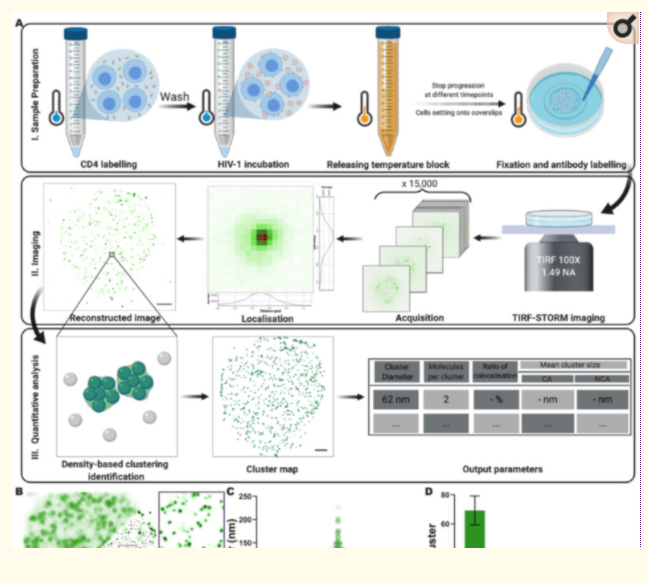


Although there is considerable knowledge of the molecular interactions between Env and host cell receptors that lead to successful fusion, the precise way in which HIV-1 receptors redistribute to sites of virus binding at the nanoscale remains unknown.
Here, we quantitatively examine changes in the nanoscale organisation of CD4 on the surface of CD4+ T cells following HIV-1 binding. Using single-molecule super-resolution imaging, we show that CD4 molecules are distributed mostly as either individual molecules or small clusters of up to 4 molecules.
Following virus binding, we observe a local 3-to-10-fold increase in cluster diameter and molecule number for virus-associated CD4 clusters.